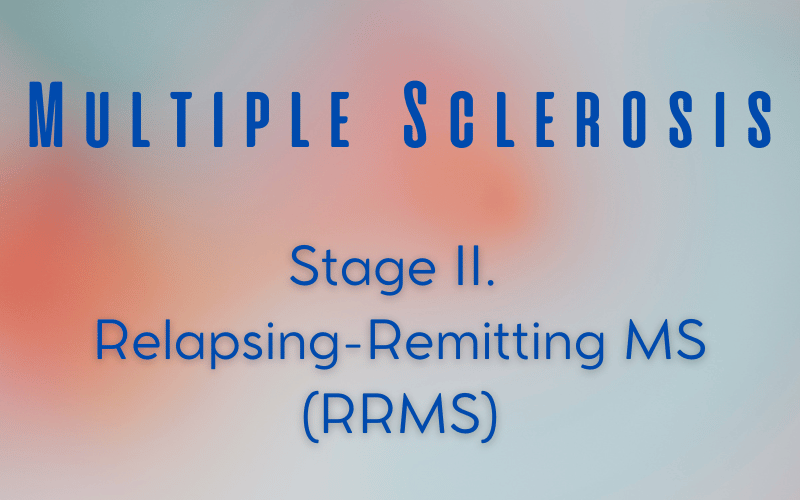2. The Unsteady Path: Relapsing-Remitting MS (RRMS)

Relapsing-Remitting MS (RRMS) is a bit of a rollercoaster ride, characterized by its unpredictable relapses and remissions. This stage is the most common form of MS, with about 85% of people with MS initially being diagnosed with RRMS. During this stage, individuals experience periods of new or worsening symptoms, known as relapses, followed by periods of recovery, termed remissions.
An intriguing feature of RRMS is the fluctuation in symptoms. During a relapse, new symptoms can arise, or existing ones can get worse. These relapses, though daunting, are typically followed by periods of remission, where symptoms partially or entirely fade. However, these remissions don’t imply complete recovery. Some symptoms may persist and can become permanent.
This stage’s intermittent nature can be quite challenging for those affected. Imagine walking a path where you repeatedly stumble, recover, and then stumble again, not knowing when the next stumble (or relapse) might come. That’s how unpredictable and uncertain life with RRMS can be.
In terms of progression, there’s no noticeable worsening of the disease during the periods of remission in RRMS. This distinguishes it from the later stages of MS, where disease progression is a constant. RRMS is like an unpredictable journey with peaks (relapses) and valleys (remissions), but without the steady uphill climb signifying disease progression.
The course of RRMS can widely vary from person to person. Some may experience long periods of remission, while others might have more frequent relapses. The unpredictable nature of RRMS can be challenging, but understanding its ebb and flow can offer a sense of control and preparedness to those navigating this unsteady path. (2)